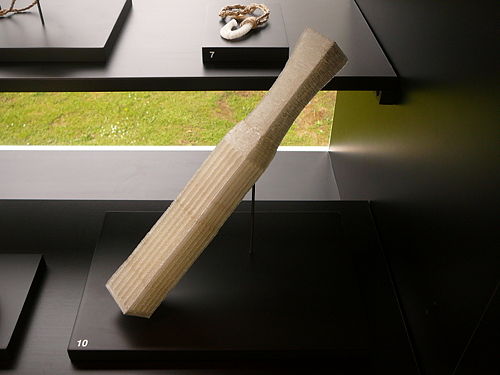Artifacts/Tapa Beater
Revision as of 06:59, 8 December 2009 by Sebastien Bailard (talk | contribs) (New page: {{Artifact|Tapa_Beater |Archaeological|Unknown|1800-1900|Collection of Massey University Wellington|User:Bronwyn Holloway-Smith?|User:Bronwyn Holloway-Smith|[[Creative Commons ...)
Tapa Beater
The tapa beater is a tool that has been used by pacific cultures for centuries to make a traditional bark cloth, known as tapa. Tapa is primarily made in Tonga, Samoa and Fiji, but it has also been made in Java, New Zealand, Papua New Guinea and Hawaii. Maker unknown, circa 1800-1900.
Artistic and Curatorial Process
These objects are replicas of artifacts imagined as lost, hidden or misregistered during the Museum of New Zealand's tenure in the former Museum Building on Buckle St, now occupied by Massey University's College of Creative Arts. The objects have been created through a process of drawing, digital 3D rendering, and finally printing with an Open Source 3-dimensional printer – the RepRap.
* Some text courtesy of Wikipedia, December 2009 All text is available under the Creative Commons Attribution-Share Alike License.
